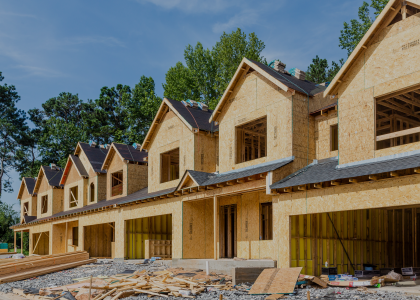Radiators and hot water baseboards in many houses and buildings today could soon be heated by efficient, electrified equipment. Home weatherization will help ensure the systems provide sufficient heat.
Nearly five million U.S. single-family homes are kept warm with hot water or steam from a boiler, distributed to radiators or baseboard units in each room. Until recently, the primary way to move toward electrifying these homes was to install multiple ductless mini-split heat pump units (or a ducted system) to provide warm air to each room.
For many of these homes, a new option may prove most cost-effective. Owners could install a heat pump that takes heat out of the outdoor air and concentrates it to produce hot water, which can then be sent through the existing radiators or baseboards. These air-to-water heat pumps—known as hydronic heat pumps—are widespread in Europe but uncommon in the United States. Now, new models are emerging, and the Department of Energy is giving the technology a vote of confidence by supporting new domestic production lines.
Hot water distribution systems are common in older homes in the Northeast and Midwest (the vast majority of these systems are in these two regions) and can also be found in old Western cities. While some residents appreciate removing radiators after installing a mini-split or ducted system, others like the heat radiators and hot water baseboard units provide and want to keep them but use a cleaner energy source.
Several manufacturers—including Enertech, Chiltrix, LG, SpacePak, and Viessmann—have offered varying forms of air-to-water heat pumps. However, some products are not readily available in the United States or are geared to homes with under-floor heating systems. This spring, the market expanded as U.S. Boiler Company announced its system, produced in Lancaster, PA, and now available.
The U.S. Department of Energy is now boosting domestic production of air-to-water heat pumps using a Defense Production Act program. It is supporting Copeland to manufacture them in Sidney, Ohio. In August, it announced a $39 million grant to support Daikin in setting up a production line at the company’s plant in Waller, Texas.
Systems produced in the United States are an important development as they avoid the costs and potential delays of shipping products from overseas, including delays for safety certifications. And they support domestic manufacturing jobs while decreasing long-term reliance on foreign markets.
A cost-effective option, particularly with good weatherization
An ACEEE study this year examined the economics of clean heating options in cold U.S. climates, finding that the lowest-cost electrification option for homes with existing water distribution systems is generally an air-to-water electric heat pump. We found that air-to-water heat pumps typically have lower lifetime purchase and operating costs than other carbon-reduction options, such as using biofuel in a gas or oil boiler.
Our study also found it very useful to first weatherize these homes, such as by adding additional insulation and sealing air leaks between the living space and the outside. Weatherizing a home reduces the amount of heat needed to make it comfortable.
Weatherization is particularly important when installing air-to-water heat pumps because the heat pumps typically produce 140oF hot water, while older distribution systems are designed and sized for 160–180o water. On average winter days, 140o water will generally be adequate for heating most homes, but on the very coldest days, 160–180o water is often needed to heat homes that have not been weatherized since the hot water distribution system was installed. After weatherization, 140o water is generally hot enough to heat a home. However, for frigid days, the U.S. Boiler Company system, for instance, has an electric resistance booster heater to increase the water temperature. Alternatively, in very cold climates, the existing boiler can be left in place and used only on the coldest days.
Many older multifamily buildings also have hot water distribution systems served by a large central boiler. At least two manufacturers produce central heat pump systems for the U.S. market today, with another two planning to introduce products soon.
Replacing steam heat may be more challenging, but it is possible
A smaller subset of homes and apartments have systems where steam rises from the boiler to radiators designed for steam. There are presently no heat pump products that produce steam for single-family homes and other small buildings, but it may be possible to use industrial heat pumps that produce steam in large multifamily buildings.
Cleaner hydronic heating is ready for growth
For homeowners with hot water distribution systems, the availability of new air-to-water heat pumps provides a way to convert to heat pumps while using the existing distribution system. The U.S. Boiler system and others are available today, and the Copeland and Daikin systems are coming. In the meantime, homeowners who might adopt this technology in the future should consider weatherizing their homes to better match the heat pump output to home heating needs. And efficiency program implementers in the Northeast and Midwest should begin considering how they might add hydronic heat pumps to their programs.



